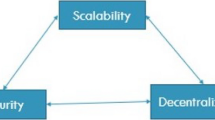Abstract
Data broadcasting as a means of efficient data dissemination is a key technology facilitating ubiquitous computing. For this reason, broadcast scheduling algorithms have received a lot of attention. However, all existing algorithms make the core assumption that the data items to be broadcast are immediately available in the transmitter's queue, ignoring the key role that the disk subsystem and the cache management play in the overall broadcast system performance. With this paper we contribute a comprehensive system's perspective towards the development of high performance broadcast systems, taking into account how broadcast scheduling, disk scheduling, and cache management algorithms affect the overall performance. We contribute novel techniques that ensure an efficient interplay between broadcast scheduling, cache management, and disk scheduling. We study comprehensively the performance of the broadcast server, as it consists of the broadcast scheduling, the disk scheduling, the cache management algorithms, and the transmitter. Our results show that the contributed algorithms yield considerably higher performance. Furthermore, one of our algorithms is shown to enjoy considerably higher performance, under all values of the problem and system parameters. A key contribution is the result that broadcast scheduling algorithms have only a small effect on the overall system performance, which necessitates the definition of different focal points for efforts towards high performance data broadcasting.
Similar content being viewed by others
References
S. Acharya, M. Franklin and S. Zdonik, Dissemination-based data delivery using broadcast disks, IEEE Personal Communications 2(6) (1995).
S. Acharya, M. Franklin and S. Zdonik, Balancing push and pull for data broadcast, in: Proc. ACM SIGMOD, Tucson, AZ (May 1997).
S. Acharya and S. Muthukrishnan, Scheduling on-demand broadcasts new metrics and algortihms, in: Proc. ACM/IEEE Int. Conf. MobiCom'98, Dallas (October 1998).
D. Aksoy and M. Franklin, Scheduling for large-scale on-demand data broadcasting, in: Proc. IEEE InfoCom, San Francisco, CA (1998).
R. Alonso, D. Barbara and H. Garcia-Molina, Data caching issues in an information retrieval system, TODS 15(3) (1990) 359–384.
M.H. Ammar, Response time in a teletext system: an individual user's perspective, IEEE Transactions on Communications COM-35(11) (November 1987) 1159–1170.
M.H. Ammar and J.W. Wong, On the optimality of cyclic transmission in teletext systems, IEEE Transactions on Communications, COM-35(1) (January 1987) 68–73.
A. Bestavros and C. Cunha, Server initiated document dissemination for the WWW, IEEE Data Engineering Bulletin 19(3) (1996) 3–11.
H. Dykeman, M.H. Ammar and J. Wong, Scheduling algorithms for videotext systems under broadcast delivery, in: Proc. International Conference of Communications (1996) pp. 1847–1851.
M.J. Franklin, personal communication (January 2001).
M.J. Franklin and S. Zdonik, A framework for scalable disseminationbased systems, in: Proc. of the OOPSLA Int. Conf. (1997) pp. 94–105.
C. Georgiadis, P. Triantafillou and C. Faloutsos, Fundamentals of scheduling and performance of robotic tape libraries in video server environments, Multimedia Tools and Applications Journal (2001) (accepted, to appear).
Intel Corporation, Intel Intercast Technology (1997) http://www.intercast.com
R. Jain, D.-M. Chiu and W.R Hawe, A quantitative measure of fairness and discrimination for resource allocation in shared computer systems, DEC-TR-301 (September 1984).
S. Jiang and N.H. Vaidya, Response time in data broadcast systems: Mean, variance and trade-off, in: Proc. of Workshop on Satellite-Based Information (WOSBIS), Texas (October 1998).
E.J. O'Neil, P.E. O'Neil and G. Weikum, An optimality proof of the LRU-K page replacement algorithm, Journal of the ACM 46 (January 1999).
E. Pitoura and G. Samaras, Data Management for Mobile Computing (Kluwer Academic 1998).
K. Stathatos, N. Rousopoulos and J.S. Baras, Adaptive data broadcast in hybric networks, in: Proc. VLDB (1997).
C.-J. Su and L. Tassiulas, Broadcast scheduling for information distribution, in: Proc. IEEE INFOCOM CA (1997).
C.J. Su and L. Tassiulas, Joint broadcast scheduling and user's cache management for efficient information delivery, in: Int. Conf. MobiCom'98, Dallas (October 1998).
N.H. Vaidya and S. Hammed, Data broadcast in asymmetric wireless environment, in: Proc. of Workshop on Satellite-Based Information (WOSBIS), New York (November 1996).
J.W. Wong, Broadcast delivery, in: Proc. of IEEE (December 1988) pp. 1566–1577.
B.L. Worthington, G.R. Ganger and Y. Patt, Scheduling algorithms for modern disk drivers, in: Proc. of the 1994 ACM SIGMETRICS (1994) pp. 241–251.
Rights and permissions
About this article
Cite this article
Triantafillou, P., Harpantidou, R. & Paterakis, M. High Performance Data Broadcasting Systems. Mobile Networks and Applications 7, 279–290 (2002). https://doi.org/10.1023/A:1015411311496
Issue Date:
DOI: https://doi.org/10.1023/A:1015411311496




